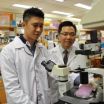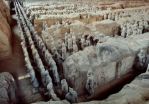(Press-News.org) New mums are being urged to be cautious about returning to work too quickly, after a QUT study found one in two were still excessively sleepy four months after giving birth.
Dr Ashleigh Filtness, from QUT's Centre for Accident Research & Road Safety - Queensland (CARRS-Q), studied the sleep patterns and tiredness of postpartum mums and found despite new mums recording stable night sleep times at 18 weeks, they continued to report being excessively tired.
The CARRS-Q study, published in PLOS ONE, followed 33 healthy new mums who recorded their postpartum sleep patterns in 15 minute increments during weeks 6, 12 and 18.
"Sleep disruption strongly influences daytime function, with sleepiness recognised as a risk-factor for people performing critical and dangerous tasks," she said.
Dr Filtness said the study had significant implications for decisions-makers about when women should return to work, with current government paid parental leave entitlements ceasing at 18 weeks.
"This brings into question whether four months parental leave is sufficient to ensure daytime sleepiness has diminished to a manageable level before returning to work," she said.
"It is important when developing regulations for parental leave entitlements that policy makers take into account the high prevalence of excessive daytime sleepiness experienced by new mothers.
"With the birth of every baby the new mother must adjust to the demands of parenting and one aspect of that is to remain functional while experiencing potentially severe sleep disruption.
"To put this into context, the assessment tool used to determine new mums' sleepiness is also used by GPs to determine clinically relevant levels of sleepiness.
"If any other otherwise healthy person presented to a doctor with this degree of sleepiness they would likely have been offered advice regarding implications for daytime impairment including the impact on sustaining attention and decision making."
Dr Filtness said the study also found while new mums were still waking on average twice a night to attend to their babies at 6, 12 and 18 weeks - their total sleep time was about 7 hours and 20 minutes.
She said Australian new mothers actually slept more than the average American worker (6h 53mins).
"So while postpartum women experienced disturbed sleep, they didn't necessarily experience total reduced sleep time," she said.
"What we found was that inevitably, new mothers will wake in the night to attend to their infant and the number of times they wake remains consistent during the first 18 postpartum weeks.
"Sleep disruption reduced over time and it appears this was driven by a reduction in the time it took for new mums to return to sleep, suggesting improved efficiency by mothers at settling their infant or the development of the infant's circadian rhythm.
"These findings highlight the importance of sleep quality as opposed to sleep quantity, especially during the first 12 weeks."
"Soon-to-be mums should be aware of the importance of their own sleep and consider how they are going to preserve their own sleep during the first few months of caring for a baby," she said.
INFORMATION:
CARRS-Q is undertaking a program to inform women who are pregnant with their first baby about the potential sleep and sleepiness experience after the baby arrives, which will also provide an opportunity to plan strategies to get through the period. To take part in the program visit, http://www.carrsq.qut.edu.au/sleepymums/index.jsp
The study titled: Longitudinal change in sleep and daytime sleepiness in postpartum women is available here.
Media contact:
Sandra Hutchinson, QUT Media (Tue, Wed, Fri), 07 3138 9449 or media@qut.edu.au
After hours, Rose Trapnell, 0407 585 901
New mothers still excessively sleepy after 4 months: QUT study
2014-08-01
ELSE PRESS RELEASES FROM THIS DATE:
Effect of microenvironment modulation on stem cell therapy for spinal cord injury pain
2014-08-01
Spinal cord injury (SCI) currently ranks second after mental retardation among neurological disorders in terms of cost to society. Pain is a debilitating consequence of SCI related to the nature of the lesion, neurological structures damaged, and secondary pathophysiological changes of surviving tissues1. Approximately two-thirds of persons who have sustained SCI experience clinically significant pain after injury, of whom one-third have severe pain2, 3. Post-SCI pain can increase with time and is often refractory to conventional treatment approaches4. Over the past decade, ...
Acrolein as a novel therapeutic target for motor and sensory deficits in spinal cord injury
2014-08-01
Acrolein, a highly reactive unsaturated aldehyde, has been shown to play a major role in the secondary injury by contributing significantly to both motor and sensory deficits. Prof. Riyi Shi, who comes from University of Purdue in USA will highlight the recent developments in the understanding of the mechanisms of acrolein in motor and sensory dysfunction in animal models of spinal cord injury, and will also discuss the therapeutic benefits of using acrolein scavengers to attenuate acrolein-mediated neuronal damage following spinal cord injury. The relevant study has been ...
Recent advances in stem cell biology
2014-08-01
Advances in stem cell research will provide enormous opportunities for both biological and future clinical applications. Basically, stem cells could replicate any other cells in the body, offering immense hope of curing Alzheimer's disease, repairing damaged spinal cords, treating kidney, liver and lung diseases and making damaged hearts whole. The potential for profit is staggering. Prof. Jinhui Chen from Indiana University in USA considered that this field of research still faces myriad biological, ethical, legal, political, and financial challenges. The eventual resolution ...
Developmental regulation of important plant phloem components discovered
2014-08-01
Sieve elements are a key component of phloem, the conductive tissue through which plants transport carbohydrates and a wide range of signalling molecules. Elongated cylindrical cells are capped at one end by a sieve plate and arranged end-to-end to form sieve tubes which in turn form a network throughout a plant's body.
"Sieve elements are very special cells which play an important role in carbon sequestration, yet so far very little has been known about their differentiation," says Professor Ykä Helariutta from the Institute of Biotechnology, University of Helsinki, ...
Plastic surgeons or nurses: Who are the better injectors?
2014-08-01
In recent years, minimally invasive aesthetic injectable procedures have grown in popularity as more and more men and women are seeking age-defying treatments. As Botulinum toxin – generally known as BOTOX® – use has increased, a growing number of nonaesthetic health professionals have emerged to perform procedures utilizing this and other injectables. Kevin Small, MD and Henry M. Spinelli, MD from the Division of Plastic Surgery Presbyterian Hospital in New York and Kathleen M. Kelly, MD from Columbia University in New York have assessed the capability of various providers ...
'Active' surfaces control what's on them
2014-08-01
CAMBRIDGE, Mass-- Researchers at MIT and in Saudi Arabia have developed a new way of making surfaces that can actively control how fluids or particles move across them. The work might enable new kinds of biomedical or microfluidic devices, or solar panels that could automatically clean themselves of dust and grit.
"Most surfaces are passive," says Kripa Varanasi, an associate professor of mechanical engineering at MIT, and senior author of a paper describing the new system in the journal Applied Physics Letters. "They rely on gravity, or other forces, to move fluids or ...
'Wetting' a battery's appetite for renewable energy storage
2014-08-01
RICHLAND, Wash. – Sun, wind and other renewable energy sources could make up a larger portion of the electricity America consumes if better batteries could be built to store the intermittent energy for cloudy, windless days. Now a new material could allow more utilities to store large amounts of renewable energy and make the nation's power system more reliable and resilient.
A paper published today in Nature Communications describes an electrode made of a liquid metal alloy that enables sodium-beta batteries to operate at significantly lower temperatures. The new electrode ...
NUS study shows effectiveness of common anti-malarial drug in controlling asthma
2014-08-01
Asthmatic patients may soon have a more effective way to control the condition, thanks to a new pharmacological discovery by researchers from the National University of Singapore (NUS).
The team, led by Associate Professor Fred Wong from the Department of Pharmacology at the NUS Yong Loo Lin School of Medicine, together with Dr Eugene Ho Wanxing, a recent PhD graduate from the Saw Swee Hock School of Public Health at NUS, discovered that artesunate, a common herbal-based anti-malarial drug, can be used to control asthma, with better treatment outcomes than other drugs ...
Preterm children do not have an increased risk for dyscalculia
2014-08-01
Preterm children do not suffer from dyscalculia more often than healthy full term children. Dr Julia Jäkel, a developmental psychologist from Bochum, and her colleague Prof Dr Dieter Wolke from the University of Warwick, UK proved this thesis to be true in their analyses – thus refuting previous scientific studies. Unlike other studies, the researchers took the children's IQ into consideration.
Dyscalculia in preterm children often impossible to diagnose
Preterm children often have cognitive deficits; they find solving complex tasks particularly difficult. However, ...
Scientists solve 2000-year-old mystery of the binding media in China's polychrome Terracotta Army
2014-08-01
Even as he conquered rival kingdoms to create the first united Chinese empire in 221 B.C., China's First Emperor Qin Shihuang ordered the building of a glorious underground palace complex, mirroring his imperial capital near present-day Xi'an, that would last for an eternity.
To protect his underworld palaces, the First Emperor issued instructions that his imperial guard be replicated, down to the finest details, in red-brown terracotta clay, poised to do battle. Thousands of these imperial guards were initially discovered in 1974; some contained patches of pigment that ...


